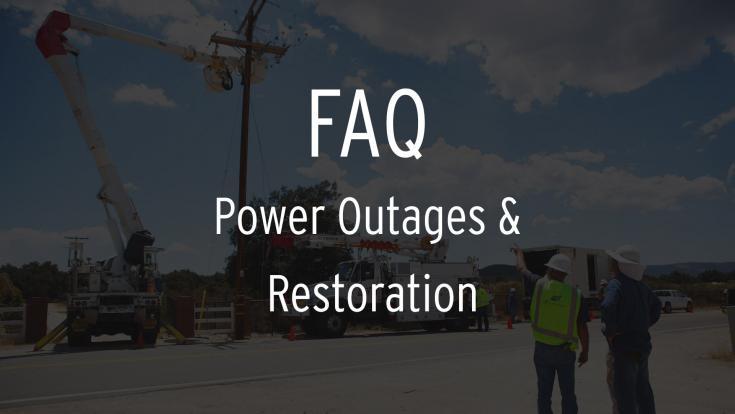During this weeklong Red Flag Warning period, many of our customers have lost power, and have questions about why power outages occur during extreme weather conditions and how and when power can be restored. We understand your frustration and take your concerns very seriously. We have prepared the FAQ below to address some of your questions.
Q: When does SDG&E de-energize power for public safety?
We take our responsibility to operate the electric grid very seriously. If conditions threaten the integrity of our system, we will turn off power to protect public safety. Some of the factors that are taken into consideration include but are not limited to the circumstances of the emergency, wind speed measurements, temperature, humidity, field observations by SDG&E crews and information from fire agencies.
Q: How long will the power be out?
Power will remain out as long as the threat to our system and public safety continues—that is, as long as winds are creating a safety issue near and around our electric infrastructure. When the winds are reduced for a sustained time, our crews will then patrol the lines to check for system damage from wind-blown debris or any other problems before the power is turned on.
Q. What is the process for restoring power?
It’s important to remember that improved weather conditions are not the only factor that determines whether a line is safe to re-energize. Restoring power to customers can be a long process. First, we need to record reduced wind speeds for a sustained period, then allow 4–8 hours of daylight for SDG&E field crews to patrol the line and to deem it safe to re-energize. When patrolling, crews are looking for safety hazards like downed lines, debris or tree branches caught on the line, broken hardware or issues related to communication wires. If there is any damage to the power lines or poles, repairs must be made first before power can be restored.
Q. Why can’t SDG&E restore power more quickly?
As mentioned earlier, before we can restore power, crews must patrol lines to assess whether there is any damage. It is difficult to predict how long a patrol might take, given the varied length of each power line, the terrain and whether aerial patrols are required.
Some circuits are located in rural, mountainous areas that require a helicopter to patrol. In those cases, wind speeds need to be below 35 mph in order for the helicopter to fly safely.
Q. Where I live, I am not experiencing gusty winds. Why is my power not back on?
While your home may be located where the winds have died down, other parts of the line or circuit serving your home may be located in an area experiencing gusty wind conditions that require de-energization as a safety measure.
Q. I don’t live in an area where SDG&E implemented proactive power shut off for public safety but I experienced a power outage. Why?
Even in areas where there was no proactive shut off, the power may be out for other reasons due to operational problems or other weather-related issues.


